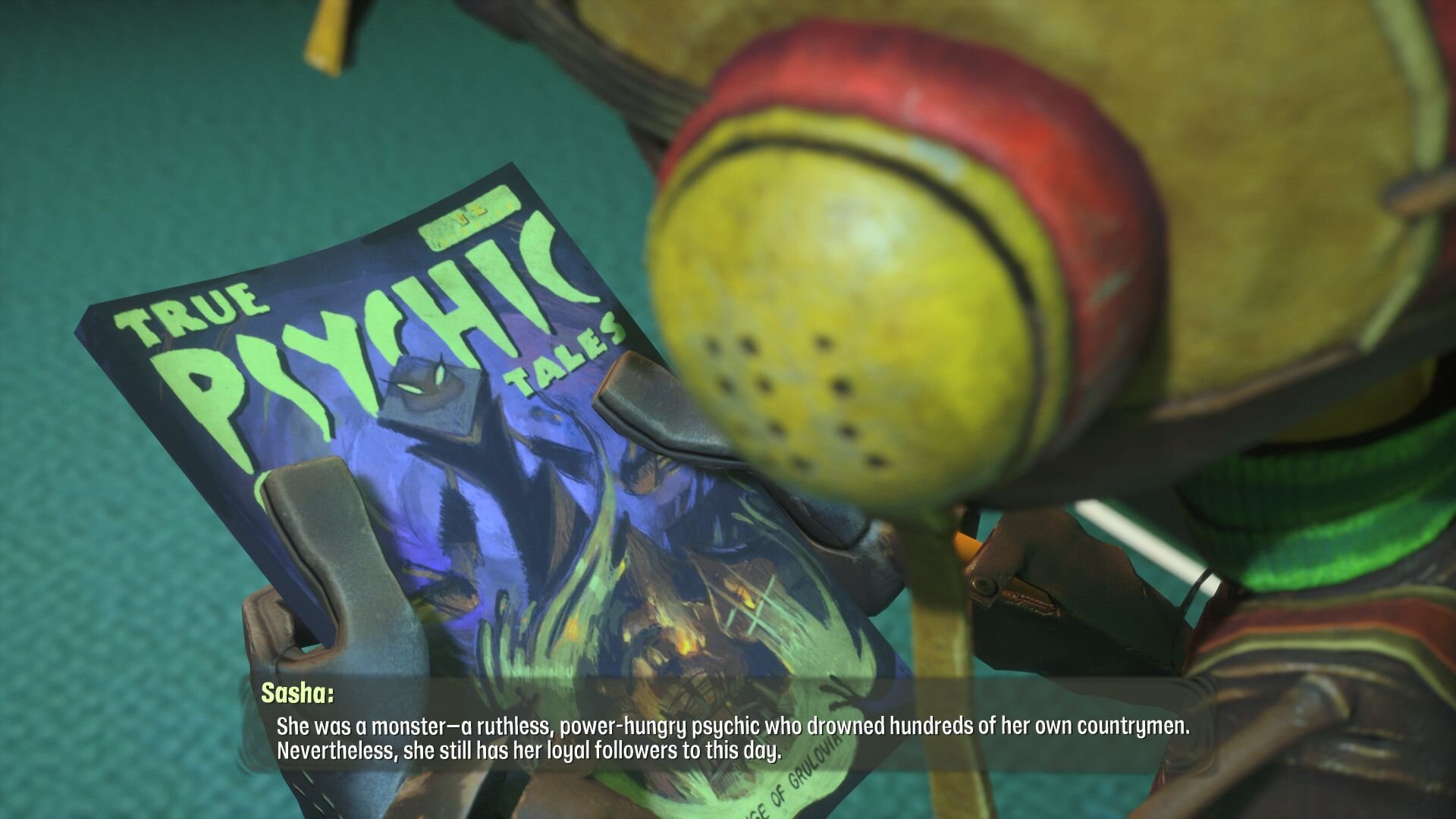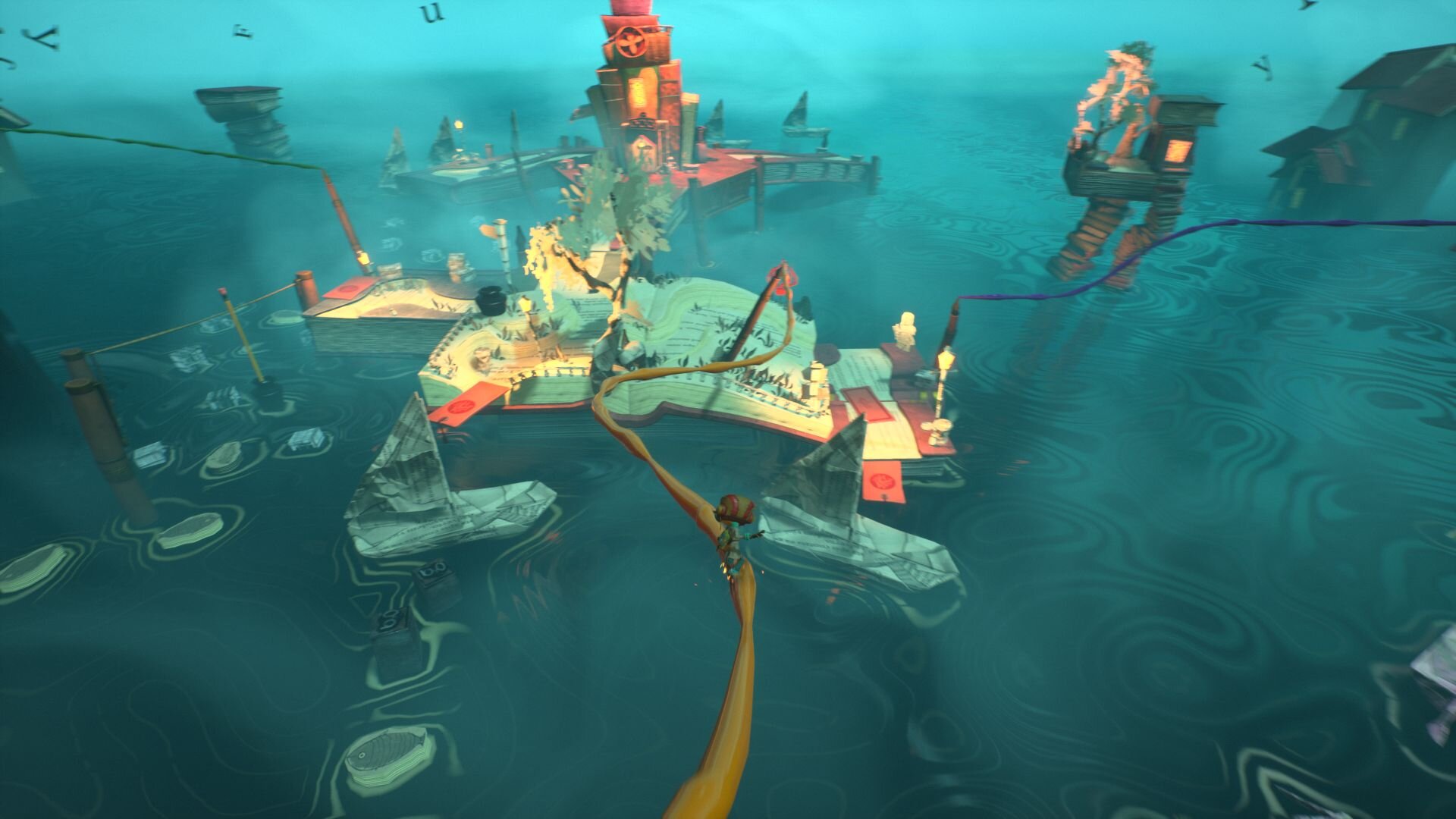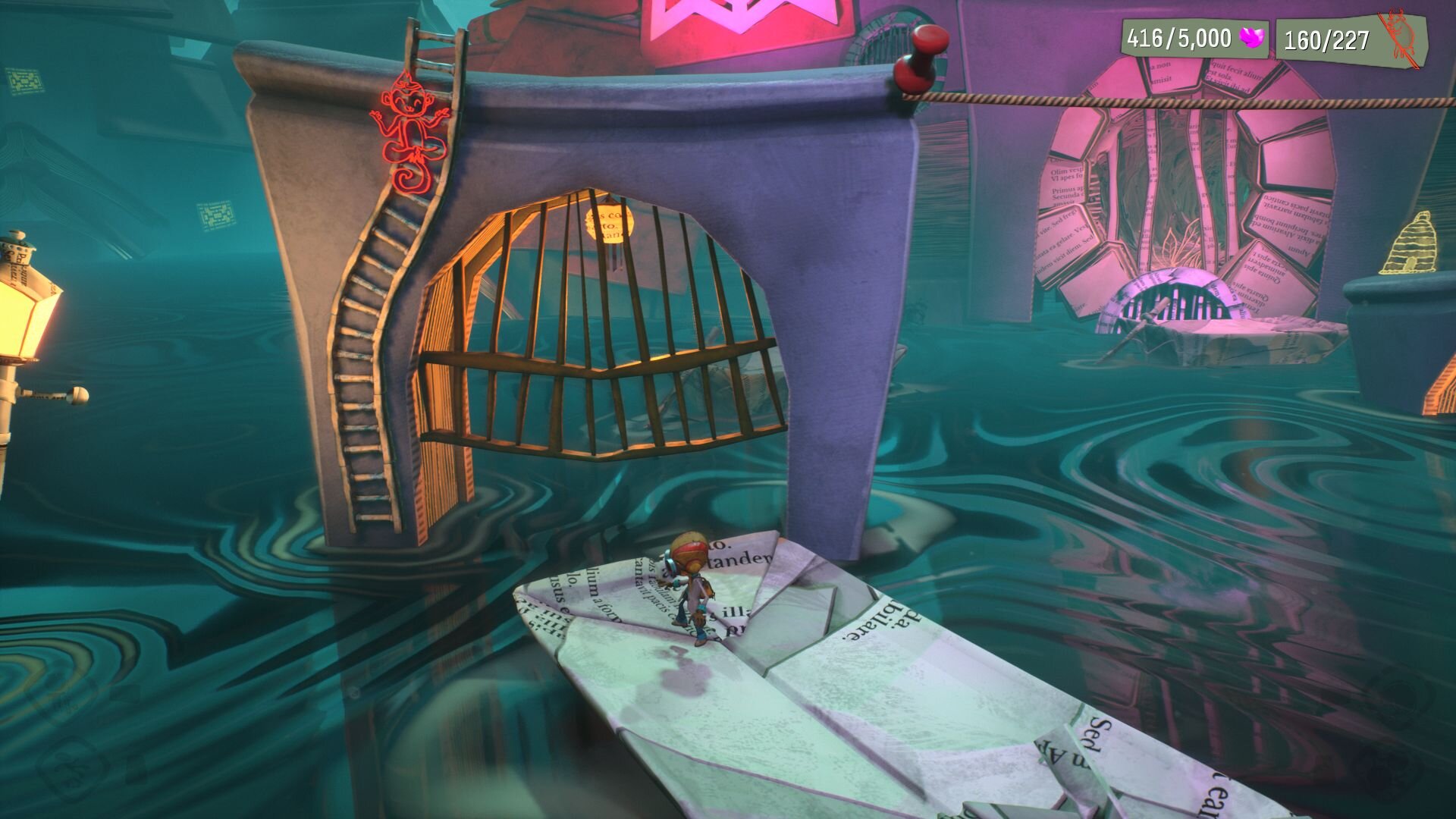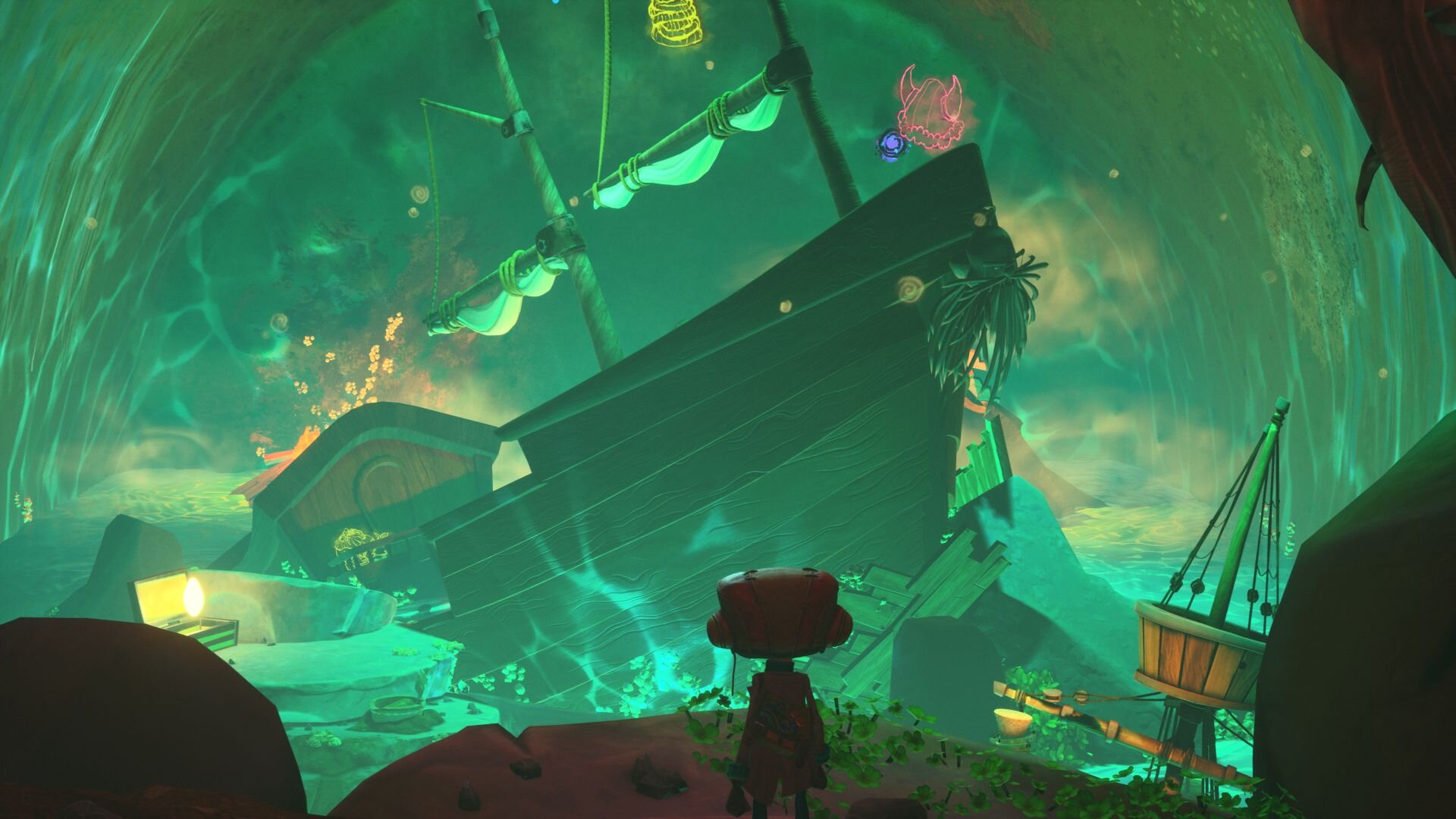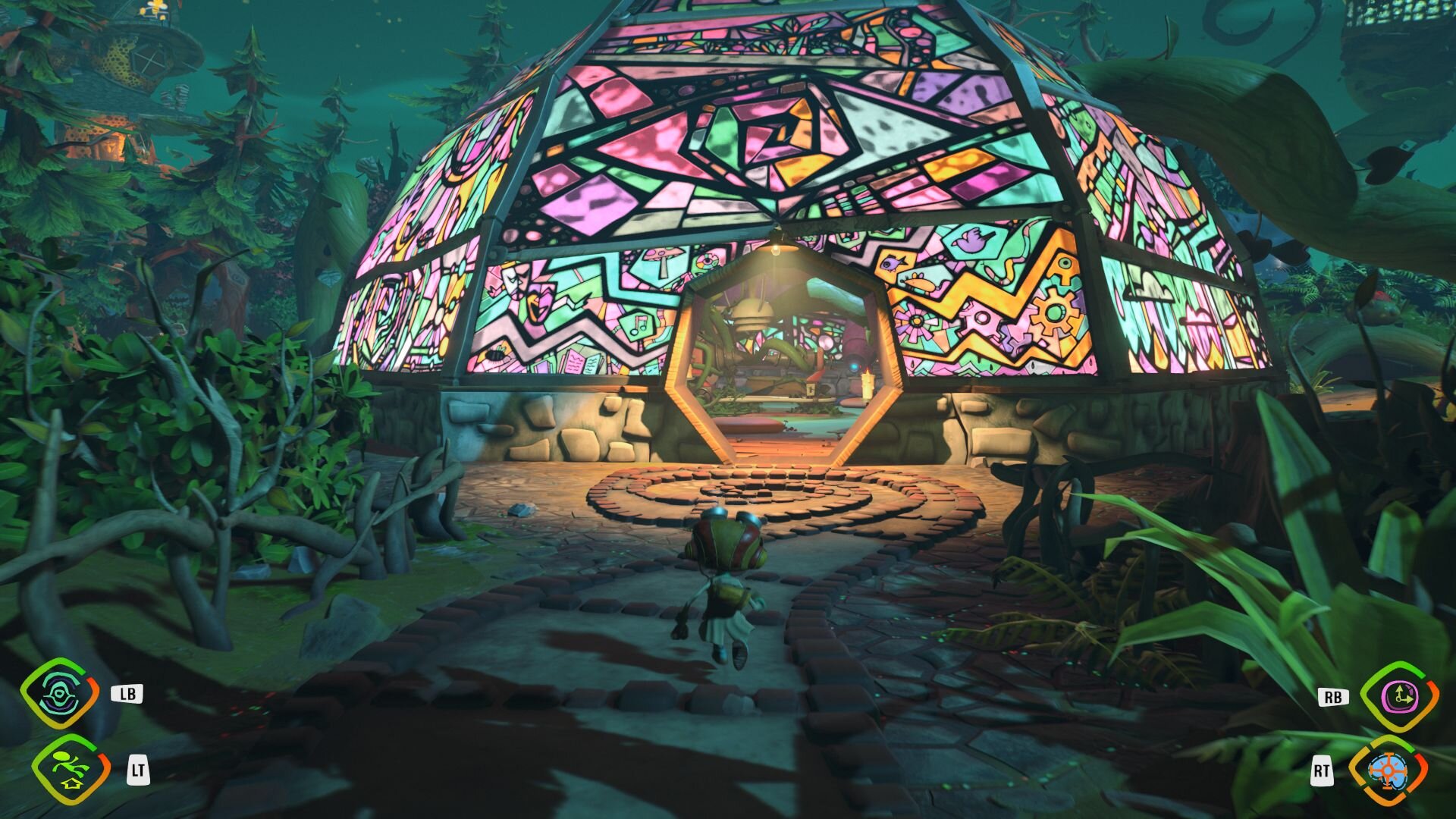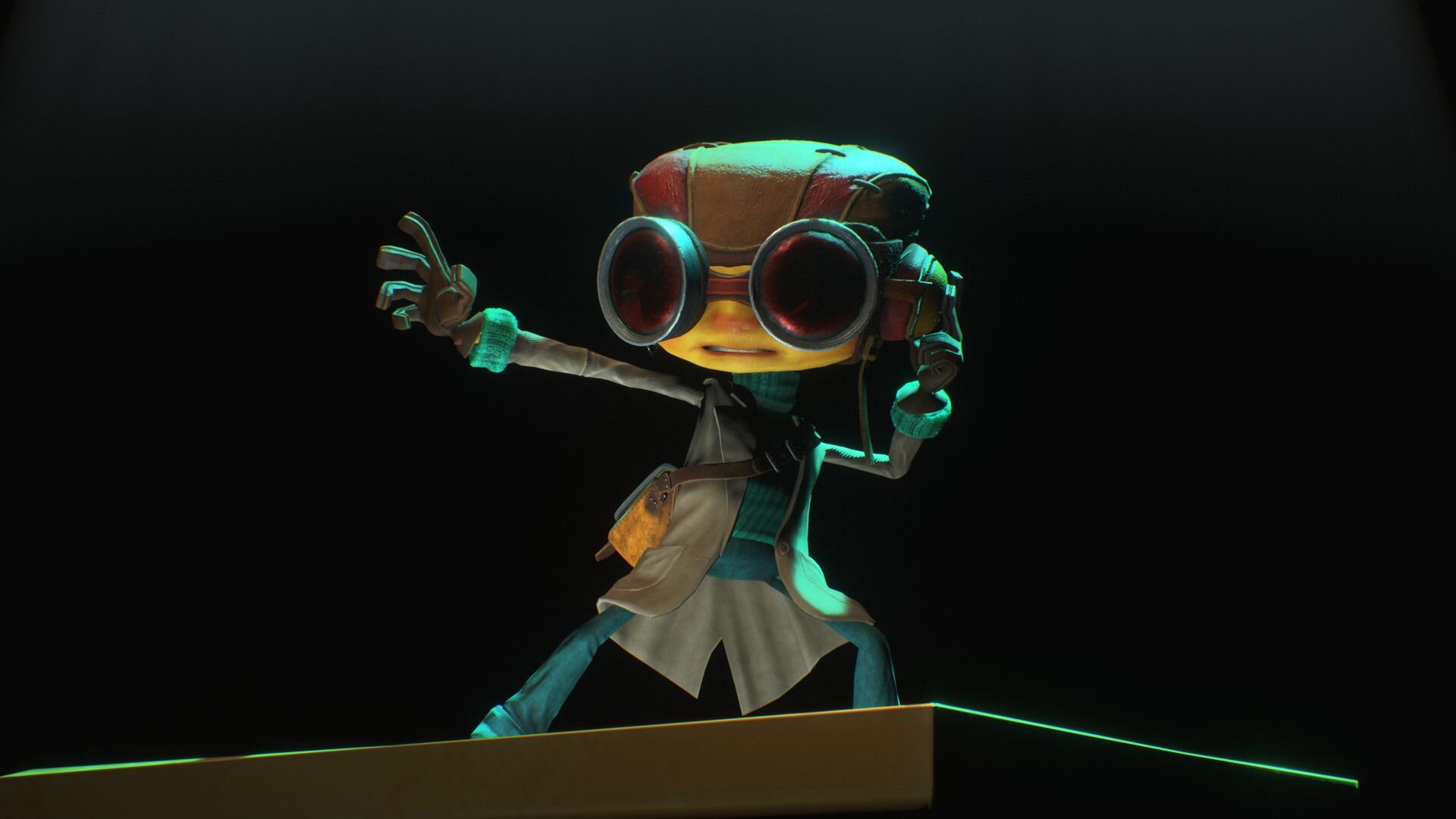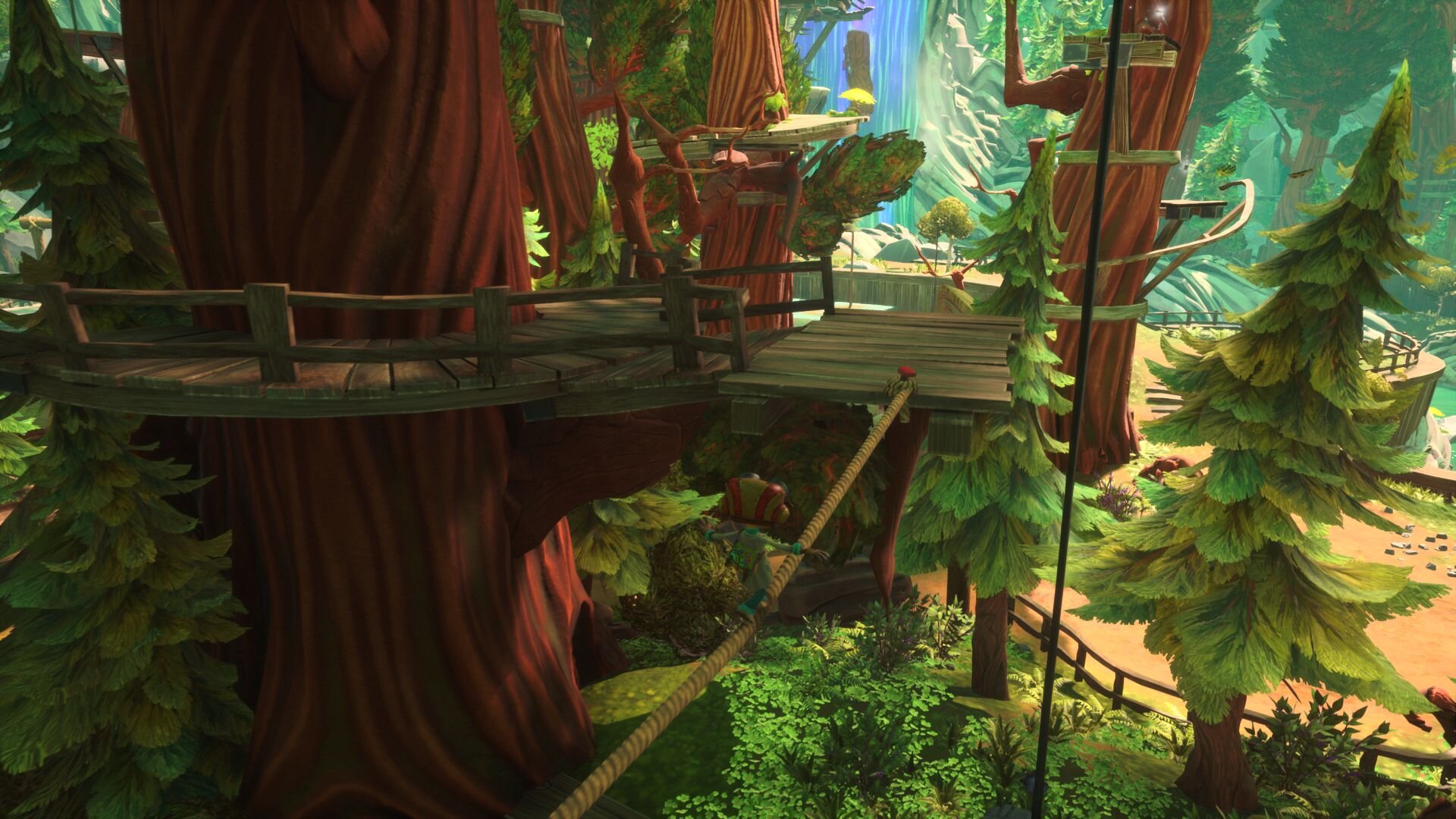A naut to be missed experience.
It’s always been an unfortunate case that Psychonauts never got the love it truly deserved. Despite its relative obscurity, it gained a bit of cult status over the years, eventually creating enough groundswell that a sequel was put into production back in 2015, announced via a crowdfunding campaign at the Game Awards. Microsoft eventually purchased Double Fine back in 2019, ensuring that the team would get all the remaining funding it needed to finish their vision, a sequel that many have been waiting some 16 years for.
Having waited for all those years, you would have to wonder if the team would be able to not just recapture the magic of the original but to make a game that felt as if it was worth the wait. While there are numerous games that have had a long-gestating development, it’s another thing entirely when you look to make a sequel to a game that was originally released several consoles ago. Do you develop it as a continuation of how it looked and felt, regardless of how dated it could appear, or do you run the risk of modernizing it too much and losing a lot of what made the original so special? Double Fine certainly walks the line on this in some ways, but smartly chooses the former in more cases than the latter, making Psychonauts 2 feel more like a direct sequel that feels as if it could have been released shortly after the original, opposed to one that would be released some 16 years later.
As a fan of the original, this was something I personally was hoping for, as the world of Psychonauts is gorgeous amongst its warped and yet twisted simplicity, oozing with the game’s personality from location to location, not to mention the often bizarre character designs that complement the aesthetic choice. For newcomers to the series, however; it may not visually be up to their modern standards, or even tastes, especially when you compare it to something like Ratchet and Clank: Rift Apart. But this is where you have the discussion of enjoying a unique art style vs raw graphical fidelity, as while both games go about their visuals in completely different ways, I’ll always lean more towards the creative art design side as Psychonauts has a distinct look to it that works incredibly well to not just the story it’s trying to tell, but a unique visual identity that is all its own, thus complementing its story and its colorful cast of characters. This isn’t to say I don’t adore graphical showcases like Rift Apart, which I absolutely loved, but its world can feel overly disconnected from the game’s own personality.
Psychonauts is a series where I would compare it to the likes of something like Coraline, Boxtrolls, Kubo and the Two Strings, or The Nightmare Before Christmas. These were movies that are gorgeous in their own way and offered up something different to the style of film that Pixar, Dreamworks, or Disney usually produced in regards to visual spectacles that were moving more and more into being photo-realistic or at least something of high visual fidelity. Both of these styles work in telling their individual stories. however; I don’t know if something like Coraline or The Nightmare Before Christmas could have been as impactful if they didn’t lean into their more creepy and simplistic visuals and the same goes here for Psychonauts as the worlds and characters that make up this series I don’t think would have been as memorable if it just looked like everything else.
While there are some moments I feel that could have benefitted from some better texture work or addressing a few rare instances of pop-in, the overall design work of what Tim Schafer and his team have done here is often incredible, and insanely creative. Not only do you have the unique environments within each brain to romp around in, but you also have the Psychonauts HQ in the Motherlobe and the outlying areas around it to explore, each packed away with tons of secrets to discover. Nearly every step I would take was consistently rewarding in my exploration both during the story and its post-game. Whether it was collecting one of the hundreds of figments or other collectibles, the sheer creativity in the level design and the purpose behind what the levels contained is where Psychonauts 2 excels beyond any platformer released in the past decade. Every single space devoted to the game is used without waste, ensuring that the stories being told are not just in its dialogue, but in their environments, making us understand what is going on without a single word uttered to us. This is a rare example of visual storytelling that absolutely nails its objective.
Taking place literally days after the events of the original, and immediately after the VR exclusive in The Rhombus of Ruin, we are once again behind the psychic goggles of one Razputin Aquato. Now, for us, it’s been 16 years since the original, and 4 years since Rhombus of Ruin, but for Raz, it’s been all of a few minutes; so this adventure really feels like a direct sequel, opposed to a separate and disconnected adventure that takes place some years later. Its narrative is one that is greatly more enjoyable and emotional with some history of the previous game, but not one that is heavily required as it does a fantastic job at explaining the in’s and out’s of Raz’s previous exploits and getting all players, both old and new, up to speed. That said, the original Psychonauts is a must-play regardless as it’s one of the best platformers of all time. 2
While Raz was the hero of the last game, his exploits haven’t exactly ended up where he has hoping to be as while he travels to the Psychonauts HQ with the likes of Sasha Nein, Coach Oleandar, and Milla Vodello, he isn’t technically an official Psychonaut himself and is instantly regulated to that of the intern program for aspiring psychic-powered youngsters. To top it off, while he is trying to fit in with his fellow students, who initially want nothing to do with him and eventually con him out of his clothes, as well as a visit from his circus-troupe family, Raz is also caught up in a conspiracy surrounding the prospect that a mole has infiltrated Psychonauts HQ and he isn’t too sure on who he can trust, even amongst his friends.
What I enjoyed so much about what Psychonauts 2 has done here from a narrative standpoint is by expanding onto the lore of the Psychonauts themselves; letting us interact with the original team, having Raz eventually meet his heroes, and how he was placed on the path to becoming a Psychonaut himself. His interactions are vastly believable and often sincere as he learns that they too suffer from a lot of issues themselves; stemming from a key moment in their past that essentially shattered the team, breaking them all in various ways. It’s during these interactions where he will learn the in’s and out’s of what the team went through, and the state they all find themselves in makes for some compelling and emotionally memorable sequences, each plagued with some issue that Raz himself will aid in solving, often alongside those very heroes in their own mind-altered environments. It’s also here where Raz himself will grow into the Pscyhonaut he so desperately wants to be.
Psychonauts is both a comedy as well as a discussion on mental health. For every serious topic that floats around in the minds of who Raz will frequent, the game is loaded with jokes and various other humorous methods used to not have the game feel too heavy, even if not every one of those jokes land. Thankfully, the humor is never used to poke fun or make light of these issues, allowing their use to feel respected in a way where the inflicted person isn’t shown to be worthless or lesser of a person due to the illness that has recently defined them, something that I also found appreciative in the recently released Dreamscaper. Most topics featured in the game range from aspects of trauma, loss, consent, alcoholism, and more, with Raz attempting to not just learn lessons about these issues, but to aid and help those afflicted with them. Their minds are also full of red flags, issues that manifest themselves in the forms of enemies that come in such flavors as doubt, bad moods, panic attacks, bad ideas, and more, each with various weaknesses and combat methods. There are even enablers that seek to make those enemies stronger, becoming nigh-invincible until you deal with their so-called cheerleader. It’s a clever way to identify the numerous problems these individuals face and allows Raz to have something to fight back against, effectively healing them in the process.
While much of your downtime and post-game will be roaming around outside and finishing up your collectibles, it is the mindscapes themselves that have come to define the series. Each brain not only features a whole new aesthetic, story, and set of characters, it also features a ton of new music and ways to use your newly discovered abilities. From riding atop a bowling ball throughout a germ-filled cityscape, bringing the band back together in a psychedelic and colored-flooded mind trip, to suffering through the horrors of a dental nightmare, I was constantly impressed with every location, never feeling like any area dragged on or felt too similar from the next. My favorite location took place in a cooking show where Raz would have to gather ingredients and prepare them into a dish for a panel of celebrity judges, only to find out that the very ingredients I was charged with collecting were the audience members themselves. It was at that point where I knew this game wasn’t going to be just special, but that it was prepared to go anywhere to tell its story.
Each of the brains you enter as I’ve mentioned is inflicted with some sort of illness. Many of these can be identified simply by the level itself, or the lead-up to entering into their mind. Whether it’s discussions on how we deal with loss, or how we present ourselves to others, each location looks to battle some pretty intense subjects as you attempt to help to track down the mole. One of the first brains you enter is that of Hollis Forsythe, the current head of the Psychonauts. At first, she isn’t intent on letting Raz join in the current case, but Raz takes it upon himself to “literally” change her mind by manipulating her own internal reasoning behind that choice. This starts a conversation in the game about consent, and we are treated to a new mechanic where you're able to fixate on thoughts and combine them to change the mind of the user. It’s a pretty powerful level that ends with an equally powerful conversation, discovering that Raz isn’t the only one to have figured out how to do this. While the level itself is a comical mixture of hospital and casino, with some shocking comparisons that truly make you think, it’s a powerful opener because it can show some real consequences for Raz infiltrating the minds of the unwilling and how powerful a Psychonaut can be if their responsibilities and morals are left unchecked.
Psychonauts 2 exists within two types of gameplay; combat, and platforming. With platforming, each level has various floating and moving platforms, trapeze swings, and numerous moments where certain psychic powers capable of Raz will come into play such as being able to glide or grapple to mental connections that allow him to cross spacious gaps. Levels are designed to fully take advantage of these powers and more, sometimes changing up how and when you’ll be able to traverse, such as a level where the platforms are at the mercy of a swinging or moving object that reveals those platforms amongst dangerous waters. Since Raz is cursed by not being able to even touch water, you’ll have to get creative in certain circumstances that either have you operating switches or using other aspects of the environment to traverse those gaps. The platforming overall feels great, is incredibly responsive, and apart from one area early on where it’s unclear on where you can stand and what is merely for the background, I rarely had issues with knowing where and how I could move around each environment, jumping or grind railing around each of the beautifully designed mindscapes and the world that exists outside of them.
Combat itself is greatly improved over the original, and that is in large part to the more creative enemy forces we’ll combat, and the powers themselves, not to mention some quality of life improvements as well. Returning from the original is levitation, telekinesis, pyrokinesis, clairvoyance, and your psi-blast, which no longer uses ammo. Abilities have a cooldown, which can be removed later on once you’ve unlocked the Pin for it far away in the endgame. As Raz is in the intern program and learning new skills, he will gain the ability to connect to mental connections, which I covered just previously, as well as the ability to slow down time, which is perfect for high-speed platforms or stopping an enemy in their tracks, as well as a new power called archetype, which allows Raz to create a paper-thin version of himself that talks so much they even created a Pin you can unlock to shut him up.
Now, using all these powers in combat is where you can mix and match to find what works for you, but some enemies can certainly be dealt with faster by using certain abilities, such as being able to use telekinesis on the judge to use their own weapon against them or using fire to deal with doubts. I would often slow down time and use psi-blast, or wait until groups of enemies swarmed around me and unleash a wide-spread fire blast. Combat may not feel as innovative as many were expecting after such a gap between games, but it feels very fluid and familiar to the original while benefitting from more polish and the game running drastically better on newer hardware.
My only issue with the powers is that you only have four buttons to map them to, making you swap back and forth fairly often. However; once I tinkered around in the settings, I found that some powers were given a shortcut such as gliding and the psychic ball to be accessible to the jump button by pressing it three or four times, respectively. Once I learned not to spam the button so much when frantically jumping all around, I was able to leave those powers away from the available four buttons and keep my favorites locked, stocked, and ready to roll. I do still wish there was a better way to map all the powers to be accessible without having to use the power wheel to swap back and forth so often, but I understand the reasons for likely not having it structured that way.
Apart from the main story, you have a wealth of side-quests to tackle, collectibles to track down, as well as leveling up to increase your overall psychic rank, an effort that gifts you upgrade tokens to boost your abilities, and how potent they can be. This also causes you to track down various items that can grant you additional ranks, such as discovering floating PSI challenge cards and PSI cores that when combined, boost your rank by one level. You also have Pins, which are scout-badges in a sense that either allow you to hold more Psitanium, the game’s shop currency or changing up your powers to deal damage in other ways, such as having your Psi-blast stun instead of kill or changing the range of your time powers. Then, there is also the ability to dive back into previous brains to track down any remaining figments, the game’s collectibles that are literally everywhere, glowing and waiting for you to find them. Each level has dozens of them as well as emotional baggage that you’ll find, hoping that you’ve located the tag that corresponds to them, that is. There are also memory vaults as well, that detail more about the brain you are in, such as seeing why certain characters are who they are and the history that has been alongside them.
With a wonderful cast of characters, all brought to life with engaging and well-performed voice acting, I was drawn deep into this warped and twisted world. As a sequel, Psychonauts 2 nails everything it needed to do to not just be as impressive, but to actually be the better game in at least a few ways. The appeal of what Psychonauts can be both in feel and in aesthetic is going to feel dated to some players and I totally get that. That said, the game does have a few visual nitpicks and some control issues with selecting and using its wide array of powers, but not a single moment of frustration and disappointment ensued because of them. Psychonauts 2 is going to be a game I keep coming back to 100% it and to just take in its world and breath of engaging characters. Despite being 16 years since its last proper installment, developer Double Fine hasn’t skipped a beat on why the original was so good, and I hope to see another game in the series soon, especially now that they are backed by the financial power of Microsoft.
Developer - Double Fine. Publisher - Xbox Game Studios. Released - August 25th, 2021. Available On - Xbox One, Xbox Series S/X, PS4, Windows, Mac OS, Linux. Rated - (T) Alcohol Reference, Crude Humor, Fantasy Violence, Mild Language, Mild Suggestive Themes, Use of Tobacco.
Platform Reviewed - Xbox Series X. Review Access - Psychonauts 2 was downloaded off of Game Pass by the reviewer.


